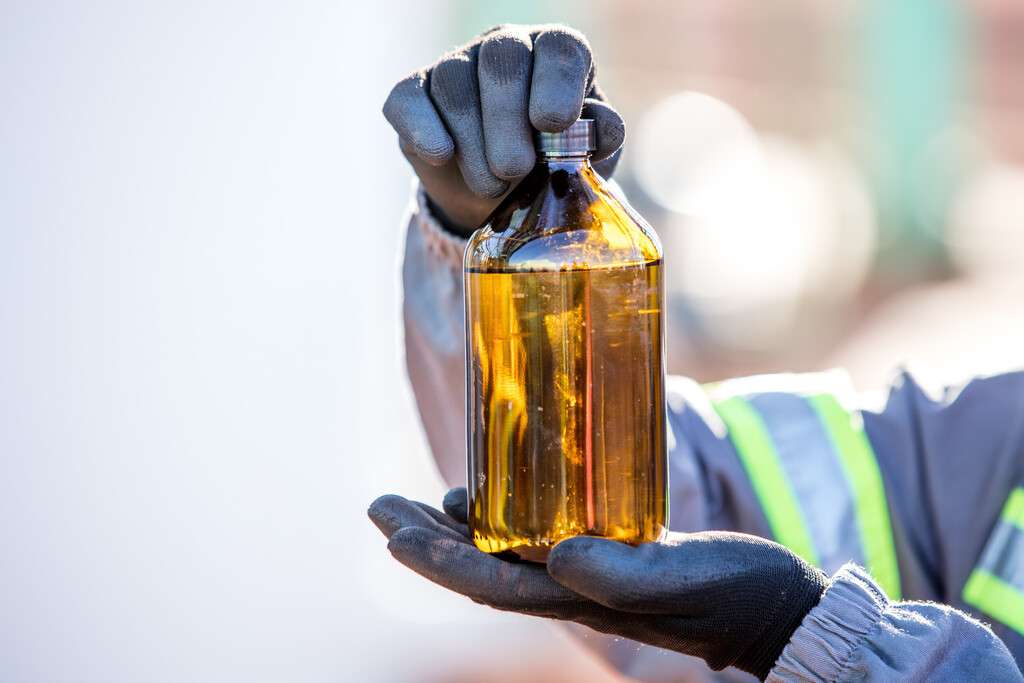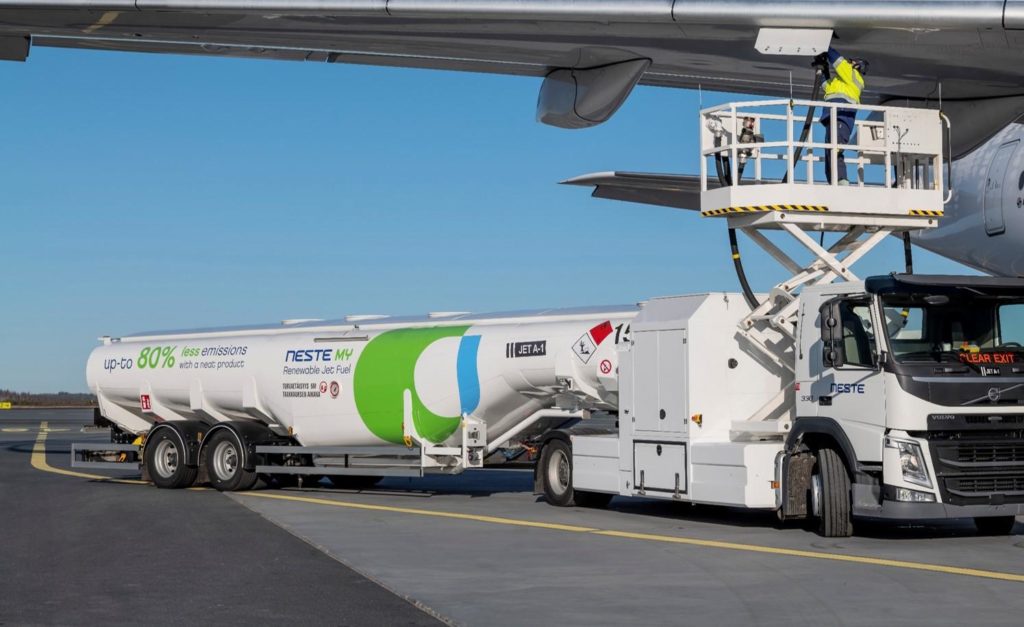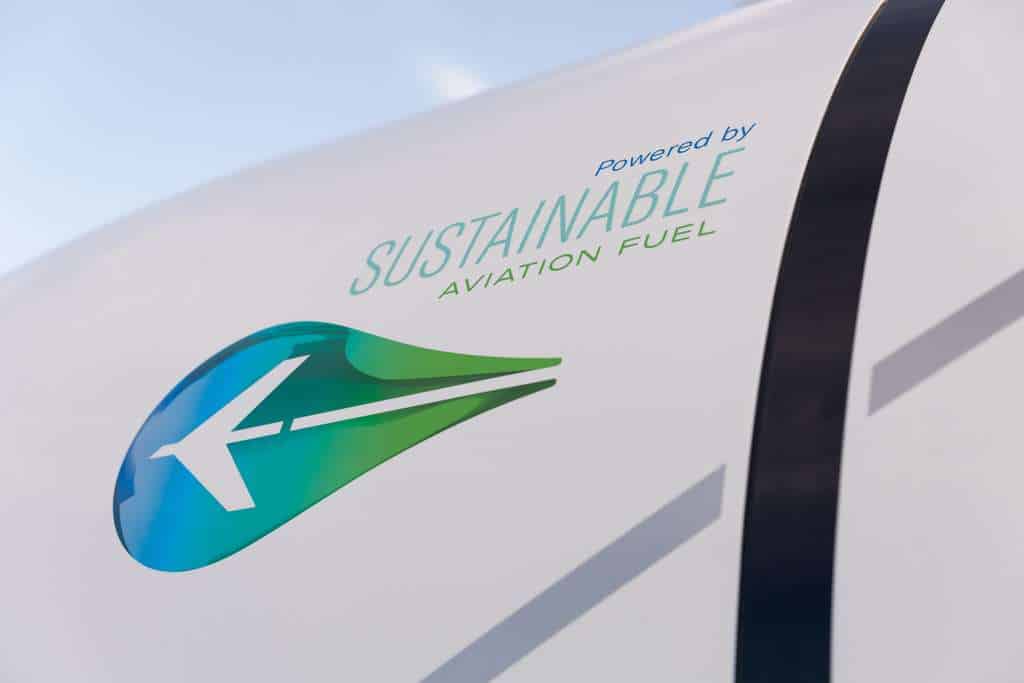The International Air Transport Association (IATA) recently unveiled compelling estimates that shed light on the rapid growth of sustainable aviation fuel production, marking a crucial step towards a greener future for air travel.
In 2024 SAF production is expected to triple to 1.875 billion liters (1.5Mt), accounting for 0.53% of aviation’s fuel need, and 6% of renewable fuel capacity.
Whilst the growth in 2023 and the projection for the coming year are heartening, there is still a way to go for SAF to make a substantial impact, according the the IATA Director General.
SAF Production Milestones
In the year 2023, SAF volumes soared to an impressive 600 million liters (0.5Mt), doubling the 2022 production of 300 million liters (0.25 Mt).
Remarkably, SAF carved out a 3% share in the renewable fuels market, with the remaining 97% dedicated to other sectors.
[monsterinsights_popular_posts_inline]

Looking ahead to 2024, the forecast is even more promising, with SAF production set to triple, reaching a staggering 1.875 billion liters (1.5Mt).
While this accounts for 0.53% of aviation’s fuel needs, it represents a significant 6% of renewable fuel capacity.

However, the proportion of SAF output in relation to overall renewable fuel production is modest, mainly due to the allocation of new capacity to alternative renewable fuels.
“The doubling of SAF production in 2023 and the expected tripling in 2024 are encouraging signs. However, for SAF to truly make a substantial impact, we need it to constitute 25% to 30% of renewable fuel production capacity,” emphasizes Willie Walsh, IATA’s Director General.
This allocation, he asserts, is crucial for putting aviation on the trajectory towards achieving net-zero carbon emissions by 2050.
Policy Landscape
The outcome of the Third Conference on Aviation Alternative Fuels (CAAF/3), hosted by the International Civil Aviation Organization (ICAO), has positioned SAF at the forefront of global discussions.
A global framework has been established, aiming to make fuels used in international aviation 5% less carbon-intensive by 2030.
Walsh highlights the pivotal role of governments, stating, “Governments must prioritize policies to incentivize the scaling-up of SAF production and to diversify feedstocks with those available locally.”
This policy-driven approach is seen as the linchpin for achieving the exponential increase in SAF production needed to meet ambitious targets.

Supply and Demand Tango
Contrary to misconceptions, demand for SAF is not the stumbling block. In 2023, every drop of SAF produced found a buyer, contributing a noteworthy $756 million to the aviation industry’s fuel bill.
Notably, 43 airlines have already committed to using 16.25 billion liters (13Mt) of SAF in 2030, with more agreements in the pipeline.
The real challenge lies in unlocking the supply to meet this surging demand. Projections indicate over 78 billion liters (63Mt) of renewable fuels by 2029, but a strategic policy framework is imperative.
Governments must incentivize renewable fuel producers to allocate 25-30% of their output to SAF, aligning with CAAF/3 ambitions and existing commitments.
Policy Objectives
To achieve these goals, effective production incentives must focus on:
- Accelerating investments in SAF by traditional oil companies
- Ensuring renewable fuel production incentives encourage sufficient SAF quantities
- Focusing stakeholders on regional diversification of feedstock and SAF production
- Identifying and prioritizing high-potential production projects for investment support
- Delivering a global SAF Accounting Framework
Unlocking Diversification: The Key to Long-Term Success
As we look ahead, approximately 85% of upcoming sustainable aviation fuel facilities will rely on Hydrotreatment (HEFA) production technology.
However, this predominantly uses inedible animal fats, used cooking oil, and industrial grease as feedstock, raising concerns about limited quantities.
To overcome this, policies should:
- Diversify SAF production through certified pathways like Alcohol-to-Jet (AtJ) and Fischer-Tropsch (FT)
- Promote investments and fast-track certification for new SAF production pathways
- Identify additional feedstocks to leverage all SAF technologies, ensuring diversification and regional options
Public Support
A recent IATA survey underscores significant public support for sustainable aviation fuel, with 86% of travelers advocating for government production incentives and an equal percentage prioritizing oil companies supplying SAF to airlines.

Click the banner to subscribe to our weekly newsleter.

Click the photo to join our WhatsApp channel so then you can stay up to date with everything going on in the aviation industry!









